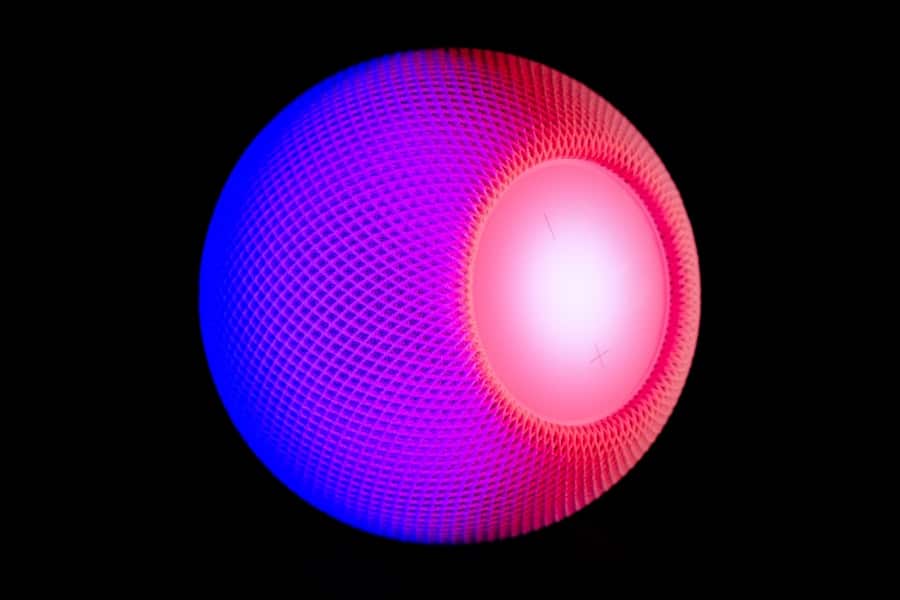Smart thermostats have revolutionized the way we manage heating and cooling in our homes and businesses. Unlike traditional thermostats, which require manual adjustments and lack connectivity, smart thermostats leverage advanced technology to provide users with a more efficient and user-friendly experience. These devices can be programmed to learn the habits and preferences of their users, adjusting temperatures automatically based on occupancy patterns, time of day, and even weather forecasts.
The integration of smart technology into climate control systems not only enhances comfort but also promotes energy efficiency, making them an essential component of modern energy management. The rise of smart thermostats is closely tied to the broader trend of home automation and the Internet of Things (IoT). As more devices become interconnected, the ability to control and monitor home environments remotely has become increasingly appealing.
Smart thermostats can be accessed via smartphone apps, allowing users to adjust settings from anywhere, whether they are at work or on vacation. This level of control not only adds convenience but also empowers users to make informed decisions about their energy consumption, ultimately leading to cost savings and a reduced carbon footprint.
Key Takeaways
- Smart thermostats are devices that can be programmed to adjust the temperature of a room and learn from the user’s behavior to optimize energy usage.
- AI technology in smart thermostats allows for advanced learning and decision-making capabilities, enabling the device to adapt to the user’s preferences and schedule.
- The benefits of using AI in smart thermostats include energy savings, increased comfort, and convenience for the user.
- AI optimizes energy usage in smart thermostats by analyzing data, predicting patterns, and making real-time adjustments to heating and cooling systems.
- Case studies have shown that AI in smart thermostats can significantly impact energy efficiency, leading to reduced energy consumption and cost savings for users.
Understanding AI Technology
Artificial Intelligence (AI) refers to the simulation of human intelligence processes by machines, particularly computer systems. These processes include learning, reasoning, problem-solving, perception, and language understanding. In the context of smart thermostats, AI plays a crucial role in enhancing the functionality and efficiency of these devices.
By utilizing machine learning algorithms, smart thermostats can analyze vast amounts of data to identify patterns and make predictions about user behavior and environmental conditions. At its core, AI technology enables smart thermostats to adapt to individual preferences over time. For instance, a thermostat equipped with AI can learn when a household is typically occupied or unoccupied and adjust the temperature accordingly.
This capability is not limited to simple programming; rather, it involves complex algorithms that continuously refine their understanding based on real-time data inputs. The result is a system that not only responds to immediate needs but also anticipates future requirements, creating a seamless user experience.
The Benefits of Using AI in Smart Thermostats
The integration of AI into smart thermostats offers numerous benefits that extend beyond mere convenience. One of the most significant advantages is enhanced energy efficiency. Traditional thermostats often operate on fixed schedules that may not align with actual occupancy patterns, leading to unnecessary energy consumption.
In contrast, AI-driven smart thermostats can dynamically adjust settings based on real-time data, ensuring that heating and cooling are only utilized when needed. Moreover, AI technology enables predictive maintenance capabilities.
This proactive approach not only extends the lifespan of HVAC systems but also contributes to overall energy savings by ensuring that equipment operates at peak efficiency. Additionally, many smart thermostats provide users with insights into their energy usage patterns, empowering them to make informed decisions about their consumption habits.
How AI Optimizes Energy Usage
AI optimizes energy usage in smart thermostats through several mechanisms that enhance both efficiency and user experience. One key method is through occupancy detection. Smart thermostats equipped with sensors can determine whether a room is occupied or vacant.
When a room is unoccupied, the thermostat can automatically adjust the temperature to save energy without sacrificing comfort when residents return. Another way AI optimizes energy usage is through weather forecasting integration. Advanced smart thermostats can access real-time weather data and adjust heating or cooling settings in anticipation of temperature changes outside.
For example, if a forecast predicts a sudden drop in temperature, the thermostat can preemptively increase indoor heating to maintain comfort levels without overworking the HVAC system. This proactive adjustment not only enhances user comfort but also minimizes energy waste. Furthermore, machine learning algorithms allow smart thermostats to analyze historical data regarding energy consumption and user preferences.
By identifying trends and patterns, these devices can create personalized schedules that align with individual lifestyles. For instance, if a user typically lowers the temperature at night or raises it during the day, the thermostat can learn these preferences and automate adjustments accordingly. This level of customization ensures that energy is used efficiently while maintaining optimal comfort.
Case Studies: AI’s Impact on Energy Efficiency
Several case studies illustrate the profound impact of AI on energy efficiency through smart thermostats.
A study conducted by the Energy Savings Trust found that Nest users saved an average of 10-12% on heating bills and 15% on cooling bills after installing the device.
The thermostat’s ability to learn user habits and adjust settings accordingly played a significant role in these savings. Another compelling case study involves Ecobee, another leading manufacturer of smart thermostats. Ecobee’s devices utilize AI algorithms to optimize energy usage based on occupancy patterns and weather forecasts.
A study by the American Council for an Energy-Efficient Economy (ACEEE) revealed that homes equipped with Ecobee thermostats experienced an average energy savings of 23% compared to traditional models. The combination of occupancy detection and predictive adjustments allowed these devices to significantly reduce unnecessary energy consumption. These case studies highlight not only the effectiveness of AI in enhancing energy efficiency but also its potential for widespread adoption across various demographics.
As more consumers become aware of the financial and environmental benefits associated with smart thermostats, the demand for AI-driven solutions continues to grow.
Future Developments in AI for Smart Thermostats
The future of AI in smart thermostats holds exciting possibilities as technology continues to evolve. One anticipated development is the integration of more advanced machine learning algorithms that can further enhance predictive capabilities. As these algorithms become more sophisticated, smart thermostats will be able to analyze even larger datasets, including user behavior across multiple devices within a smart home ecosystem.
Additionally, advancements in sensor technology will likely play a crucial role in improving the accuracy of occupancy detection and environmental monitoring. Enhanced sensors could provide more granular data about indoor air quality, humidity levels, and even individual room usage patterns. This information would enable smart thermostats to make even more informed decisions regarding temperature adjustments, leading to greater energy savings and improved indoor comfort.
Moreover, as renewable energy sources become more prevalent, future smart thermostats may incorporate features that allow users to optimize their energy usage based on real-time electricity pricing or availability from solar panels or wind turbines. By intelligently managing energy consumption during peak hours or utilizing stored energy when rates are lower, these devices could further contribute to sustainability efforts while providing cost savings for users.
Considerations and Limitations of AI in Smart Thermostats
While the benefits of AI in smart thermostats are substantial, there are also considerations and limitations that must be acknowledged. One primary concern is data privacy and security. Smart thermostats collect vast amounts of data about user behavior and preferences, raising questions about how this information is stored and used by manufacturers.
Users must be aware of privacy policies and ensure that their data is protected from unauthorized access. Another limitation lies in the reliance on internet connectivity for optimal functionality. Many smart thermostats require a stable internet connection to access cloud-based services for updates and data analysis.
In areas with unreliable internet service or during outages, users may find their devices less effective or unable to perform certain functions. Additionally, while AI can learn user preferences over time, there may be an initial adjustment period during which users must manually override settings until the device fully adapts. Furthermore, while AI-driven features enhance convenience and efficiency, they may also lead to over-reliance on technology for climate control decisions.
Users might become less engaged in understanding their energy consumption habits or fail to recognize when manual adjustments are necessary due to unique circumstances.
The Future of AI in Energy Optimization
The future of AI in energy optimization through smart thermostats appears promising as technology continues to advance at an unprecedented pace. With ongoing developments in machine learning algorithms, sensor technology, and integration with renewable energy sources, smart thermostats are poised to become even more effective tools for managing energy consumption in homes and businesses alike. As consumers increasingly prioritize sustainability and cost savings, the demand for intelligent climate control solutions will likely continue to grow.
By harnessing the power of AI, smart thermostats not only enhance user comfort but also contribute significantly to reducing overall energy consumption and minimizing environmental impact. As we move forward into an era where energy efficiency is paramount, AI-driven smart thermostats will undoubtedly play a pivotal role in shaping our approach to energy management in the years ahead.
In a related article, Discover the Best Free Software for Translation Today, explores how technology can be utilized to optimize language translation processes. Just as AI plays a crucial role in optimizing smart thermostat energy usage, it also has the potential to revolutionize the way we communicate across different languages. By leveraging the power of AI, translation software can provide accurate and efficient translations, making it easier for individuals and businesses to connect with people from around the world.
FAQs
What is a smart thermostat?
A smart thermostat is a device that can be controlled remotely and can learn and adapt to the heating and cooling preferences of a household. It can also be programmed to automatically adjust the temperature based on the time of day or whether anyone is home.
How does AI optimize energy usage in smart thermostats?
AI in smart thermostats uses algorithms to analyze data such as weather forecasts, household occupancy patterns, and temperature preferences to optimize energy usage. It can learn from user behavior and make automatic adjustments to save energy without sacrificing comfort.
What are the benefits of using AI in smart thermostat energy optimization?
Using AI in smart thermostats can lead to significant energy savings, lower utility bills, and reduced environmental impact. It can also provide convenience and comfort by automatically adjusting the temperature based on user preferences and habits.
Are there any potential drawbacks to using AI in smart thermostat energy optimization?
One potential drawback is the reliance on technology, which can lead to issues if the AI malfunctions or if there are connectivity problems. Additionally, some users may have concerns about privacy and data security when using AI-powered smart thermostats.
How can consumers benefit from AI-optimized smart thermostat energy usage?
Consumers can benefit from AI-optimized smart thermostat energy usage by enjoying lower energy bills, increased comfort, and the convenience of not having to manually adjust the thermostat. Additionally, they can contribute to environmental sustainability by reducing energy consumption.



